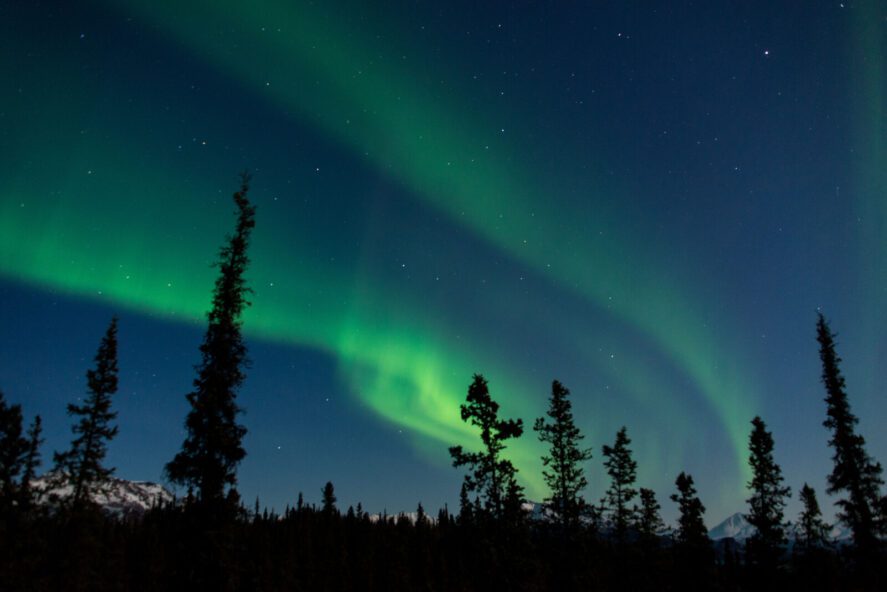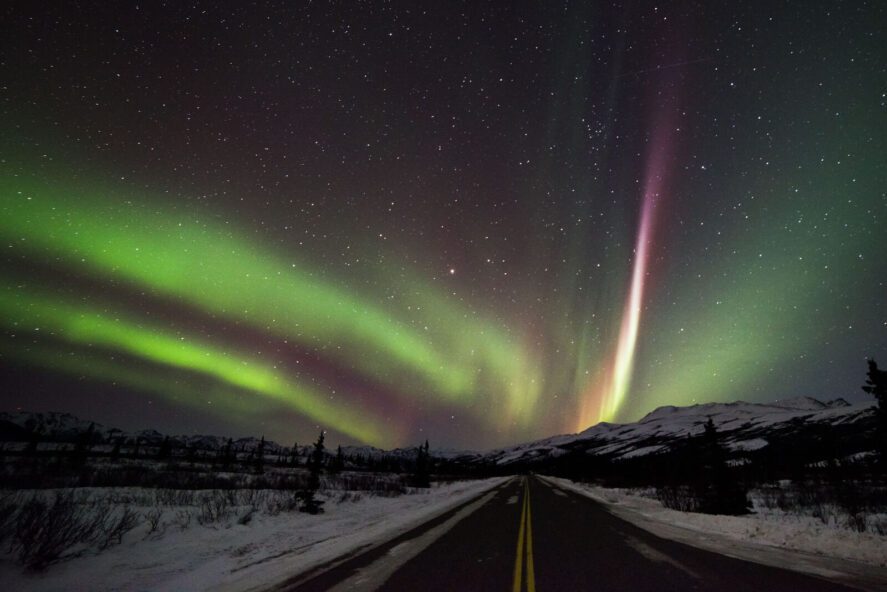Special Guest Blog by Dr. Melanie Windridge, author of Aurora: In Search of the Northern Lights
What are the Northern Lights?
The swirling arcs of the Aurora Borealis or “the Northern Lights” that we see are actually billions of oxygen and nitrogen atoms being struck by charged particles and emitting tiny flashes of light high up in the polar night sky – usually between 100 and 500 kilometres above the Earth’s surface.
Where Do These Particles Come From?
These charged particles (electrons) are accelerated into our atmosphere from space. The acceleration is driven by the energy of the Sun, coming to Earth as a stream of particles called the solar wind, which hits the bubble of our magnetic field.
If the solar wind got close to the Earth’s surface, it would strip away our atmosphere and expose us to harmful radiation. Fortunately the earth’s magnetic field protects us, instead creating spectacular auroral light shows as it dissipates the energy.
When the charged particles reach the earth, they pump the earth’s magnetic field with energy, which catapults charged particles around the back of the earth down magnetic lines and into our upper atmosphere. Because they come down the magnetic field lines they end up near the poles, forming rings of aurora, also known as the “northern lights”.
The “Canvas” for the Aurora Borealis
On the earth’s surface, and even in the air around us, atoms are very close to each other, and constantly collide. But in the upper atmosphere the air is very thin and atoms are spread out, often kilometres apart. These unusual conditions allow atoms to behave in unusual ways.
When these atoms are struck by charged particles, their energy levels change. To balance this out, they emit energy, which appears as light.
The most common aurora is a green arch or band across the sky, rippling or twisting. This green light is emitted by oxygen atoms.

Green bands of aurora over Denali National Park (Lian Law/NPS)
The Red and Blue Aurorae
At very high altitudes (several hundred kilometers up) where oxygen atoms are more spread out, the light they emit has a longer wavelength, which appears red. Usually the red light is obscured by the lower green light. But intense solar activity can cause the rings of aurora around the Earth’s poles to expand, so the northern lights can be seen at lower latitudes, where viewers looking north will see the red top of the auroral curtain with the green lower part obscured by the Earth’s curvature.
These red aurorae are steeped in mythology. Being very rare in more temperate latitudes, and often being blood red, for millennia the aurora was interpreted as a bad omen. Aurorae are said to have foretold the death of Julius Caesar (44 BCE) and presaged the American Civil War (1860).
At lower altitudes, incoming particles may hit nitrogen atoms. The wavelength of light from the different mix of atoms is shorter, creating a blue light. If solar activity is particularly strong, charged particles may make it far enough into the Earth’s atmosphere to create blues and purples.

Green aurora changing to red (Kent Miller/NPS)
Aurora Borealis: A Changing Picture
The aurora ebbs and flows over the course of a night – the arc of green light starts in the north, works its way overhead to the south, releases energy in a brightening and breaking-up of the arc, then comes back to the north. This is called a “substorm” and the pattern was first noticed in 1964 by a young Japanese researcher, Syun-Ichi Akasofu, from the University of Alaska, Fairbanks. Akasofu noticed that occasional but intermittent times of brightness and activity interrupt the otherwise quiet auroral oval.
The Northern Lights: A Natural Wonder
Throughout history, travellers have been in awe of the mysterious northern lights. As science provides answers, some say that the magic is lost. But for me, knowledge doesn’t diminish the wonder – the more I know, the more incredible they seem. To understand, you need to see them for yourself.
Aurora: In Search of the Northern Lights is available now at Amazon.com.
